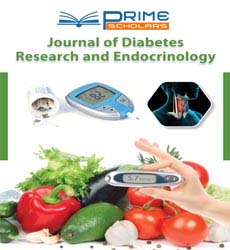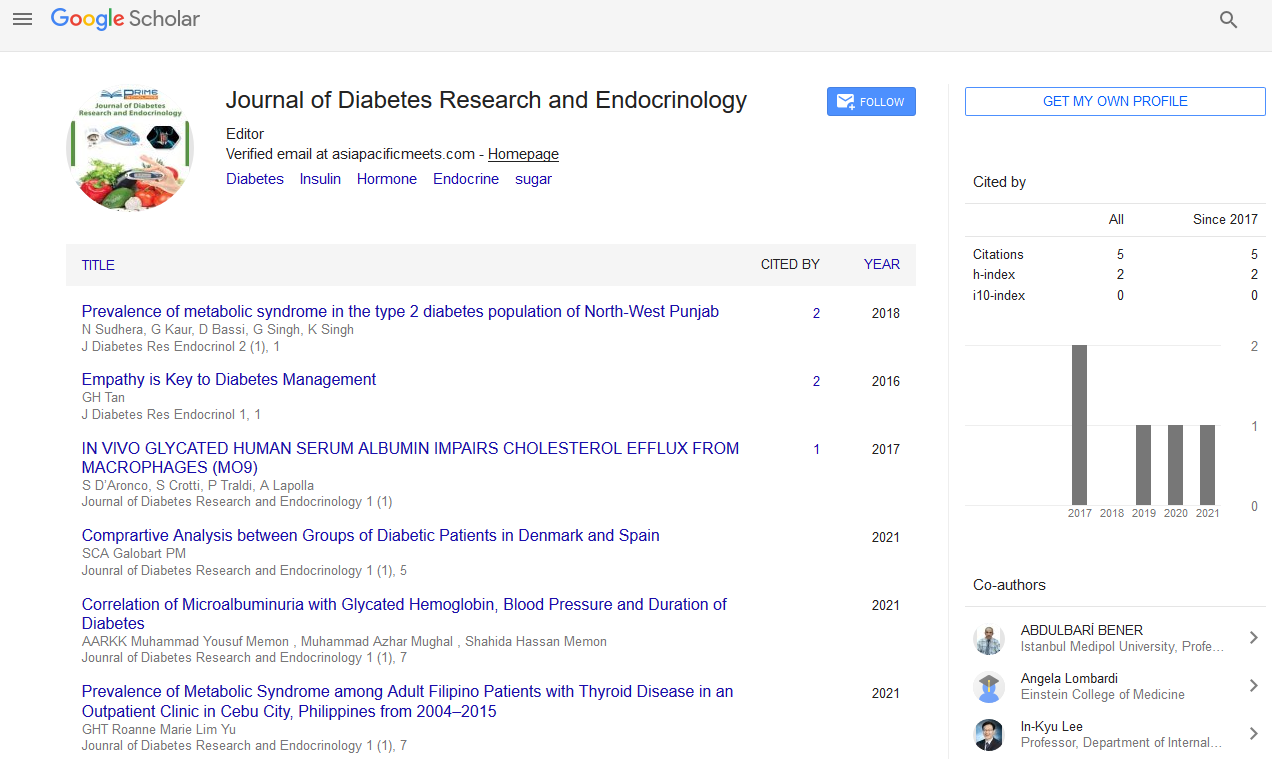Commentary - (2022) Volume 6, Issue 6
Gestational Diabetes Mellitus (GDM) Traditionally Refers to Abnormal Glucose Tolerance with First Detection during Pregnancy
Dereje Fedasa*
Department of Diabetic Medicine, University of Bejaia, Algeria
*Correspondence:
Dereje Fedasa,
Department of Diabetic Medicine, University of Bejaia,
Algeria,
Email:
Received: 01-Nov-2022, Manuscript No. IPJDRE-22-15032;
Editor assigned: 03-Nov-2022, Pre QC No. IPJDRE-22-15032 (PQ);
Reviewed: 17-Nov-2022, QC No. IPJDRE-22-15032;
Revised: 22-Nov-2022, Manuscript No. IPJDRE-22-15032 (R);
Published:
29-Nov-2022, DOI: 10.36648/IPJDRE.6.6.32
Description
Gestational diabetes means diabetes which occurs during
pregnancy. GDM has long been associated with obstetric and
neonatal complications primarily associated with increased infant
birth weight and increasingly recognized as a risk factor
for future maternal and offspring cardiometabolic disease. This
included increasing background obesity rates among women of
childbearing potential and increasing maternal age, implementation
of the revised International Diabetes Society and Pregnancy
Research Group criteria and diagnostic procedures for
her GDM. Will be currently, there is no international consensus
on the diagnosis of GDM because GDM is one of the most common
complications of pregnancy today, so there are practical
limitations regarding its complex historical development and
antenatal resources considerations. Nevertheless, current clinical
approaches to GDM should be influenced not only by its
short-term complications, but also by its long-term prognosis.
Recent data have demonstrated the impact of in utero exposure
to maternal hyperglycemia and maternal hyperglycemia
on the metabolism of children and adolescents, with evidence
of fetal overgrowth from 24 weeks of gestation prior to traditional
diagnosis of GDM. Show lasting adverse effects of GDM’s
major contribution to the intergenerational global epidemic of
cardiometabolic disease underscores the importance of identifying
GDM as an early risk factor for type 2 diabetes and cardiovascular
disease, thereby contributing to the general Expand
the clinical approach to include addressing long-term maternal
and fetal complications.
Obesity and diabetes are two major metabolic complications
associated with poor diet and a sedentary (lazy) lifestyle. At
worst, metabolic problems contribute too many other diseases.
There is also an increasing need to control the occurrence
of such diseases. Improving your diet and lifestyle can help
keep them at a high level. Therefore, this review recommends the use of a ketogenic diet (KD) in the management of obesity
and diabetes. KD includes a diet that replaces glucose with ketone
bodies and is effective against many ailments, including:
Metabolic disorders, epileptic seizures, autosomal dominant
polycystic disease of the kidney, cancer, peripheral neuropathy,
and skeletal muscle atrophy. The actions of KD have received
much attention, including maintenance of metabolic action on
glucose sugars, inhibition of insulin-like growth factor 1 (IGF1)
and phosphoinositide-3-kinase (PI3K)/protein kinase B (AKT)/
mammalian targets. Route is available. Contributes to the reduction
of rapamycin (mTOR) pathway alterations changes in
systemic ketone body homeostasis, diabetic hyperketonemia,
etc. KD can be argued to be an effective diabetes approach because
it regulates glucose, sugar, and insulin levels. Therefore,
an urgent solution between obesity and diabetes treatment
can also be demonstrated by KD.
There is a large portfolio of drugs to keep blood sugar under
control, but these drugs are not without side effects. More
importantly, once diagnosed, diabetes is almost irreversible.
Renal, retinal, cardiovascular, neuronal, and liver dysfunction
are the most common complications of diabetes, and there are
no effective treatments capable of reversing organ damage.
The molecular mechanisms of how type diabetes develops and
leads to irreversible organ damage are still unknown. In particular,
this review focuses on novel targets that may play a role in
the pathogenesis of type 2 diabetes.
Acknowledgement
None
Conflict of Interest
The authors declare that they have no conflict of interest.
Citation: Fedasa D (2022) Gestational Diabetes Mellitus (GDM) Traditionally Refers to Abnormal Glucose Tolerance with First
Detection during Pregnancy. J Diab Res Endocrinol. 6:32.
Copyright: © 2022 Fedasa D. This is an open-access article distributed under the terms of the Creative Commons Attribution
License, which permits unrestricted use, distribution, and reproduction in any medium, provided the original author and source
are credited.

